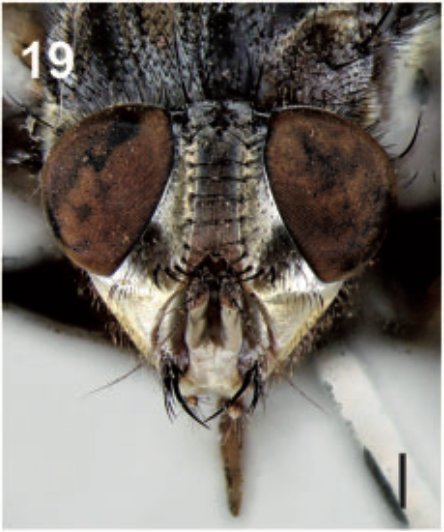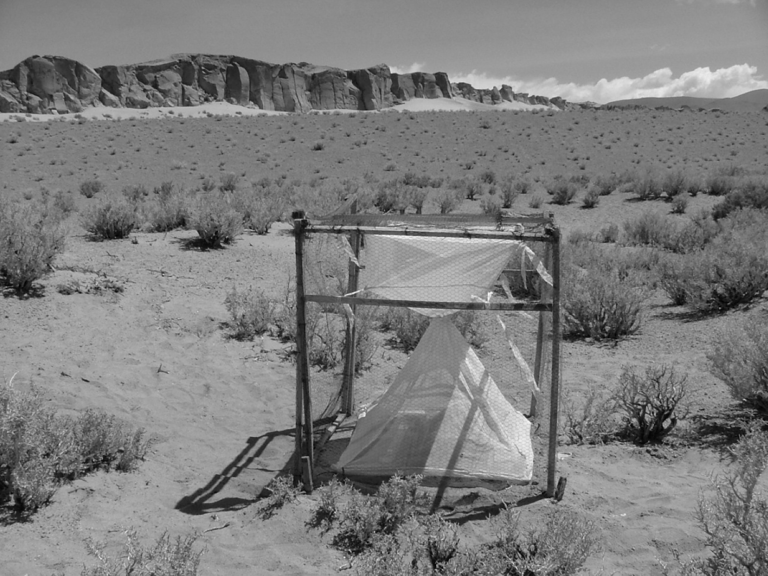Flesh Flies
Aballay FH, Fernández Campón F, Mulieri PR, & Urquiza SV. 2011
Sarcophagidae (Diptera) de importancia forense en la puna de Catamarca, Argentina: La ovoviviparidad como ventaja en condiciones de extrema aridez [Sarcophagidae (Diptera) of forensic importance at a high altitude desert in Catamarca, Argentina: Ovoviviparity as an advantage under extreme arid conditions].
Revista de la Sociedad Entomologica Argentina 70, 255-266.
Despite their prevalence in human corpses during decomposition, Sarcophagidae are not frequently used in forensic studies due to the difficulty in their identification and to the lack of information on their biology. In this paper, we identified the species of Sarcophagidae associated to corpses and studied their relationship to decomposition stages. We analyzed preferences for different cadaveric substrates (pig and lama) and microenvironmental conditions (shade, sun) at a site located at 3600 m.a.s.l. during the spring. Two pig carcasses, one located in the shade and the other in the sun, and a third carcass of a lama located in the sun, were used. We collected 597 individuals belonging to five Sarcophagidae species: Microcerella antofagastensis Mulieri, Mariluis & Aballay (n=347), M. quimaliensis (Lopes) (n=117), M. rusca (Hall) (n=32), M. penai (Lopes) (n=5) and M. aulacophyto Pape (n=96). Both M. antofagastensis and M. quimaliensis were the effective colonizers and represented 78 % of the total adults collected. Microcerella antofagastensis was the primary colonizer. Both species had a similar response against microenvironmental conditions, and both preferred the pig carcass. We discuss the importance of these two species as forensic indicators and the advantages of ovoviviparity against other oviparous species under extreme arid conditions.






Mulieri PR, Mello-Patiu C A, & Aballay FH. 2017
Taxonomic revision of Lipoptilocnema (Diptera: Sarcophagidae), with notes on natural history and forensic importance of its species.
Journal of Medical Entomology 54, 50-75.
Lipoptilocnema Townsend is a small genus of Neotropical Sarcophaginae with a distinctive genitalic morphology. This genus is revised based on the examination of the type series and large numbers of specimens of the seven previously known species, plus three new ones herein described, one from Argentina (L. delfinado Mulieri and Mello-Patiu, sp. nov.), and two from Brazil (L. savana Mulieri and Mello-Patiu, sp. nov. and L. tibanae Mulieri and Mello-Patiu, sp. nov.). All species are described or redescribed and illustrated. Distribution maps and a key for male identification are provided. The taxonomic position of this genus is reviewed, and the interpretation of phallic structures is discussed. Notes on the natural history of Lipoptilocnema species are provided, and their potential importance as PMI indicators is highlighted, including the first record of Lipoptilocnema reared from a dead human body.
Mulieri PH, Mariluis J C, & Aballay FH. 2012
Two species of Microcerella (Diptera: Sarcophagidae) found in highland arid landscapes of Argentina during Forensic Studies.
Journal of Medical Entomology 49, 183-191.
Two species of Microcerella Macquart were obtained from pig and llama corpses during a decomposition field experiment in highlands desert landscapes of Catamarca, Argentina. We sampled four pig and two llama carcasses. Microcerella antofagastensis sp. nov. is described, and M. quimaliensis (Lopes, 1982) is redescribed. Illustrations of male and female terminalia of both species are provided and should allow a correct identification. Notes on the biology of both species are given.